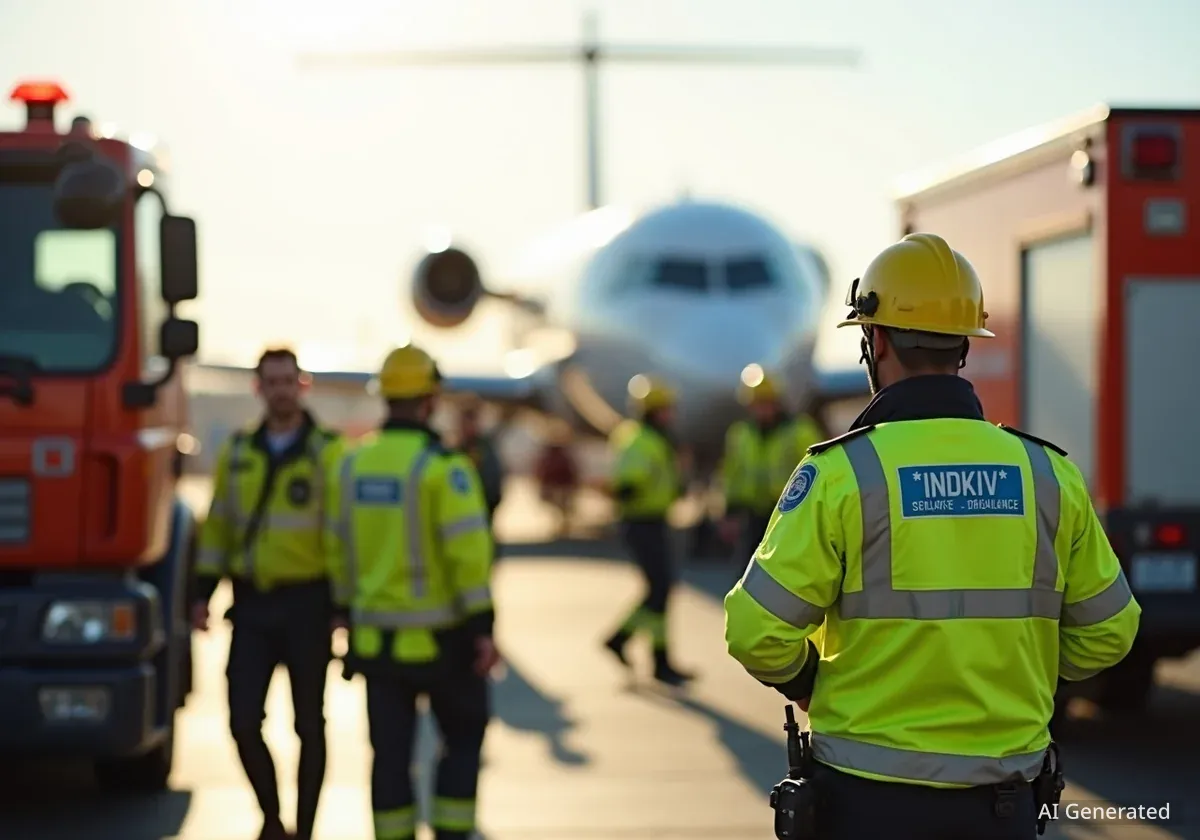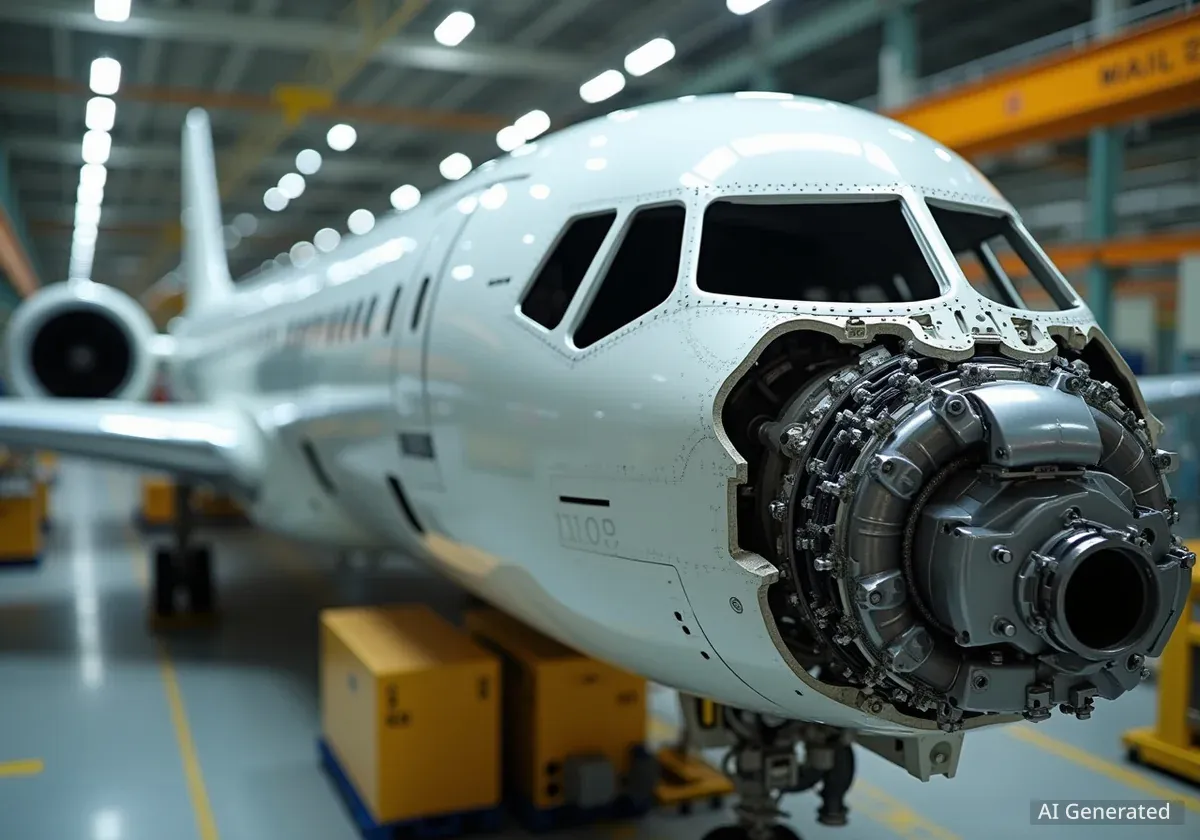Mumbai, India, has officially opened its second major airport, the Navi Mumbai International Airport (NMI). This new facility aims to significantly reduce congestion and delays that have long affected air travel in one of the world's most populated urban areas. The project, which took nearly two decades to complete, represents a major infrastructure achievement for the city.
The first phase of NMI introduces a terminal designed to manage 20 million passengers annually. This expansion is expected to alleviate pressure on Mumbai's existing Chhatrapati Shivaji Maharaj International Airport (BOM), which currently serves over 54 million travelers each year, often leading to overcrowding and extended wait times.
Key Takeaways
- Navi Mumbai International Airport (NMI) is now operational.
- Phase one handles 20 million passengers yearly, easing pressure on existing airport.
- Future plans include four terminals with 90 million annual capacity by 2032.
- New airport aims to enhance Mumbai's status as a global aviation hub.
- Improved air connectivity for cargo and passengers is expected.
Easing Mumbai's Air Travel Congestion
For decades, Mumbai has faced challenges due to its single, heavily used airport. The Chhatrapati Shivaji Maharaj International Airport (BOM) managed 48.83 million passengers in 2019. Today, that number has grown to more than 54 million travelers annually. This high volume often results in significant delays and long lines, impacting the travel experience for millions.
The introduction of NMI is a direct response to these issues. It provides much-needed additional capacity, which is critical for a city that continues to grow and attract more travelers. The new airport's initial operations are focused on improving efficiency for both domestic and international flights.
"It's a great airport. It's a terrific location," said Mark D. Martin, an India-based aviation analyst. "But the area is not yet developed. The viability and sustainability of an airport in India purely depend on its access to the population."
Future Expansion and Global Ambitions
The long-term vision for Navi Mumbai International Airport is ambitious. By the year 2032, NMI is projected to feature four terminals capable of handling 90 million passengers per year. This expansion would position Mumbai alongside major global multi-airport hubs such as London, New York, and Dubai, significantly boosting its international standing in aviation.
Prime Minister Narendra Modi officially opened the airport on October 8. During the inauguration, he highlighted the growth of India's aviation sector. "In 2014, we only had 74 airports. Today, we have more than 160," he stated. He also noted the economic benefits for local communities, explaining that "With this new airport, Maharashtra farmers will be able to connect with the supermarkets of Europe and Middle East. And the fishermen's produce can quickly reach the global market."
Key Aviation Statistics
- BOM 2019 Passengers: 48.83 million
- BOM Current Passengers: Over 54 million annually
- NMI Phase 1 Capacity: 20 million passengers annually
- NMI 2032 Target Capacity: 90 million passengers annually across four terminals
- India's Airport Growth: From 74 airports in 2014 to over 160 today
Enhanced Passenger Experience and Airline Operations
Airport officials anticipate that NMI will offer travelers a more efficient experience. This includes shorter lines, faster check-ins utilizing biometric technology, and smoother connections as airlines expand their service offerings. Several major carriers are already preparing to increase their presence at the new airport.
According to Air India Group, its low-cost subsidiary, Air India Express, plans to operate 20 daily departures from NMI, including flights to international destinations. IndiGo, India's largest airline, will transfer dozens of daily flights to NMI once operations fully commence and plans to add new international routes by November. Akasa Air, a domestic budget airline, is also moving in, with plans for more than 100 weekly flights to start.
Cargo and Business Aviation Capabilities
Beyond passenger travel, cargo operations at NMI are expected to be crucial. The airport launches with an annual capacity of 800,000 tons, which is vital for Mumbai's role as a major hub for pharmaceuticals and e-commerce. This enhanced cargo capability will support various industries by facilitating faster movement of goods internationally.
NMI also includes a dedicated general aviation terminal, designed to accommodate up to 75 business jets. This facility is the largest of its kind in India, catering to private and corporate travel needs. The goal is to elevate India's aviation infrastructure to the level of other leading Asian mega-hubs.
Benchmarking Against Global Hubs
Jeet Adani, director of airports for the Adani Group, a key investor in NMI, has indicated that the airport benchmarks itself against top Asian facilities. "Singapore Changi is known for efficiency and passenger experience. NMI is designed to exceed it in ultimate capacity, while matching its digital backbone. Seoul Incheon and Tokyo Narita are examples of Asian order and technology. We aim to meet those benchmarks on airside, while surpassing them in growth headroom," he commented.
Design, Sustainability, and Connectivity Challenges
The architectural design of NMI, created by Zaha Hadid Architects, is intended to be a visual landmark. Its lotus-shaped terminal draws inspiration from an ancient Indian symbol representing purity and resilience. The roof features a canopy of golden petals, while the interiors combine traditional jaali latticework with modern glass and lighting. This blend creates a calm and comfortable environment for passengers.
Sustainability is a core element of the airport's design, incorporating natural cooling systems, renewable energy sources, and water recycling programs. Inside, the airport offers modern lounges, diverse dining options, and advanced technology services aimed at streamlining the travel process.
Ground Transportation and Future Developments
Despite the advanced terminal design, ground connectivity to Navi Mumbai International Airport presents a significant challenge. The Mumbai Trans Harbour Link, India’s largest sea bridge, has reduced travel time from South Mumbai to approximately 20 minutes. However, during peak traffic hours, connecting roads can extend this journey to several hours, potentially frustrating travelers.
Aviation analyst Mark D. Martin noted that airports require time to fully integrate into a city's transport framework. "It takes time for an airport to mature. When you create an airport, it takes time for the additional support systems — things like hotels, accommodation, and access to the city through a strong taxi, metro, bus, or rail network — to develop in equal proportion."
Currently, metro extensions and express bus routes are still under development. Shuttle services will need careful coordination with existing train and bus timetables. Without a direct metro connection from key commercial districts at launch, many passengers are likely to rely on cars and taxis, which could increase pressure on already busy roads.
Devandra Fadnavis, Chief Minister of Maharashtra state, mentioned plans for a water taxi service between the Gateway of India monument and NMI. However, specific details and a timeline for this service have not yet been provided.
NMI offers Mumbai a vital solution to its air travel capacity issues. Its success will ultimately depend on how effectively the city addresses the ongoing ground transportation challenges. If these connectivity issues can be resolved, the new airport has the potential to provide the enhanced travel experience Mumbai has long required.





